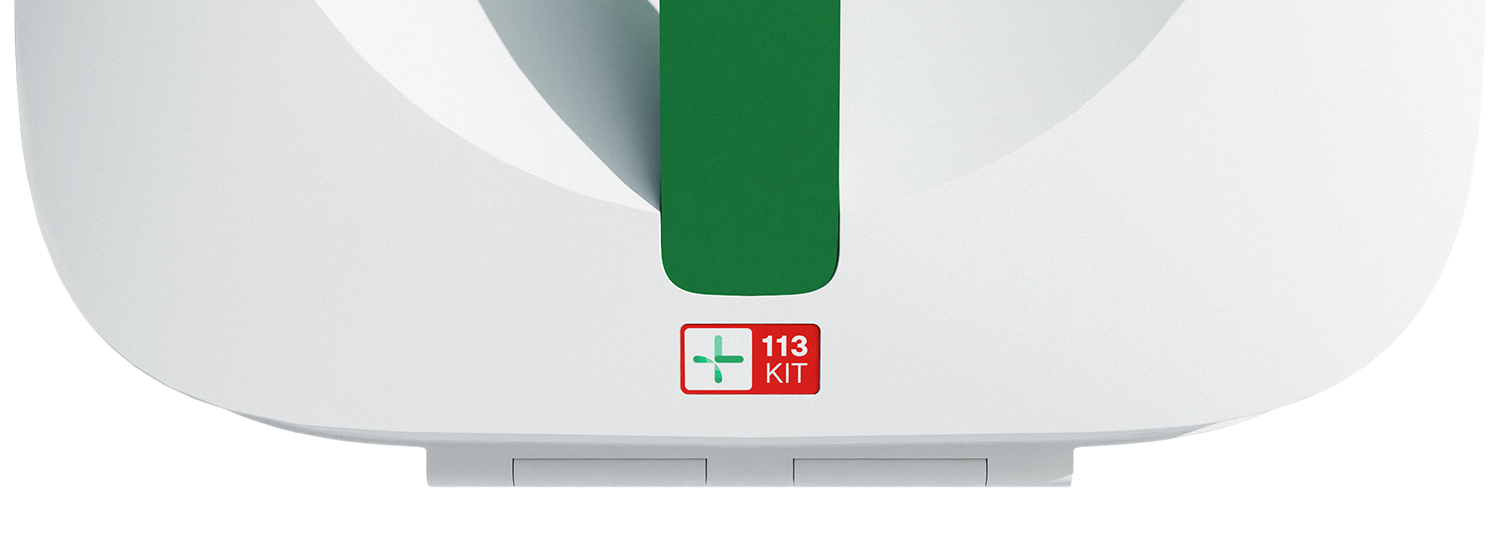Emergency medicine is the field where stakes are the highest: every decision is critical, every minute matters. Being able to use our digital expertise in Tallinn to save lives in remote Norwegian villages serves as a reminder that the benefits digitalization can bring are truly limitless.
The project
Aidency 113KIT is a smart medicine kit that can be remotely activated, allowing authorised medical personnel (i.e. emergency call centres) to give civilian first aid providers access to life saving medications. This means that a person in need can be helped even before the arrival of emergency services; critical assistance can be provided by people who do not have prior medical training; and there is controlled access to life saving medication on the scene that would normally be unavailable due to prescription or regulatory needs. In addition to typical first aid situations, use cases include heart attacks and anaphylactic shocks.
Video case study: courtesy of Inventas and Marcus Støren
The complexity
Usability, reliability and safety were at the core of this project. When controlled substances, high stress environments, untrained users and very real life-or-death choices meet, there is no room for error. It’s a big problem that required a complex solution, but in simple packaging.
The kit was designed with panicked users in mind. The containing box had to be sturdy enough to survive rough handling – and yet, easy to open and lock; and contents inside had to be grouped, packaged and labelled in a way that ruled out any potential mistakes.
Inventas (our parter in Norway who took responsibility for the whole product design and regulatory consulting) did an incredible job. As user tests showed, every user managed to select the correct medication box on their first go!
Our job at Helmes was to build the “remote” part of the kit: the authorised unlocking and re-locking of the box. We created the cloud service and software solution that allowed the right kit (and only the right kit!) to be opened by the emergency services while on the call with the first aid provider at the scene.
Technical details
Our team was responsible for designing and implementing the software system that enables the remote control of the medical kit from the emergency center. The solution was built using Next.js — a React framework — for the web application, and Express — a Node.js web application framework — for the backend. The entire stack was developed in TypeScript to ensure strong type safety and maintainability. We used PostgreSQL as the database, with Prisma as the ORM to streamline data modeling and migration. The complete system is hosted in Microsoft Azure, leveraging its reliability, scalability, and built-in security features.
One of the main challenges was to ensure that the system operates fast and reliably, even under demanding emergency conditions. To achieve this, we designed the infrastructure to take full advantage of cloud-native services, emphasizing high availability, scalability, and resilience. Rigorous testing, continuous integration, and real-time monitoring were implemented to guarantee system stability and performance.
Another key aspect was ease of use. Emergency services personnel use the system only occasionally, often under pressure, so the interface needed to be extremely intuitive. We conducted multiple UX testing rounds, collecting feedback from real users and fine-tuning every detail to minimize cognitive load and ensure that critical actions can be performed without hesitation.
The system is operated within the healthcare and emergency services environment, where security, reliability, and compliance are critical. We performed a comprehensive cybersecurity risk assessment to identify potential vulnerabilities and applied corresponding mitigation measures to protect against unauthorized access or service disruption. This ensured that the system met the high operational and safety standards required for such use cases.
A further technical challenge involved monitoring the condition of medicines stored in the kit. Certain medications must not be exposed to specific temperatures for extended periods. We developed continuous environmental monitoring and tracking functionality that automatically notifies Aidency when a kit—or specific medicines—are compromised or no longer usable, ensuring patient safety and operational readiness.
Finally, precise location tracking was critical. The system integrates detailed maps, including indoor positioning capabilities. Each location includes a photo and a short textual description, allowing emergency center staff to give accurate guidance to callers, even within complex buildings.
Agile co-operation
The development of the Aidency 113KIT had to meet relevant Medical Device Regulations and ISO 13485 and IEC 62366 standards; and meant that all phases from product design to real life testing required close co-operation and managed communication between all parties. We followed an agile process built on rapid feedback and close collaboration between all key partners:
- Aidency: the product owner and project initiator, who defined operational requirements
- Inventas: the team working with regulatory standards and licencing, and designing the physical product
- Helmes: building the digital infrastructure for the kit
- Creor: who took on the industrialized production of the end product
- AMK: Emergency Medical Dispatch Centre responsible for on-call help to users
- Møre og Romsdal county: provided an ideal location for real life testing and implementation with their hard-to reach landscapes
Behind the name
Did you know that the Norwegian ambulance phone number is 113, hence the name Aidency 113KIT?

